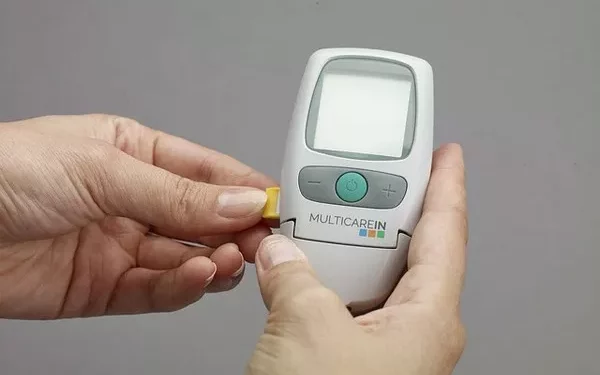Overview of Gestational Diabetes Mellitus (GDM)
Gestational diabetes mellitus affects a significant proportion of pregnant women worldwide. It is associated with an increased risk of complications for both the mother and the baby. For the mother, GDM can lead to an increased risk of developing type 2 diabetes later in life, as well as complications such as pre-eclampsia, cesarean delivery, and polyhydramnios. For the baby, risks include macrosomia, neonatal hypoglycemia, jaundice, and respiratory distress syndrome.
Screening for Gestational Diabetes
Screening for GDM is typically conducted between the 24th and 28th weeks of pregnancy. This timeframe is chosen because insulin resistance tends to increase during the second trimester due to placental hormone secretion, making it a critical period for detecting glucose intolerance. Two primary methods are used for screening: the one-step and the two-step approaches.
The Two-Step Approach
The two-step approach is the most commonly used method in the United States. It involves an initial glucose challenge test (GCT) followed by an oral glucose tolerance test (OGTT) if the results of the GCT are abnormal.
Glucose Challenge Test (GCT):
- A 50-gram glucose solution is administered, and blood glucose is measured after one hour.
- A blood glucose level of 140 mg/dL (7.8 mmol/L) or higher is considered abnormal, warranting further testing with the OGTT.
Oral Glucose Tolerance Test (OGTT):
Following an overnight fast, a fasting blood glucose level is measured.
The patient then consumes a 100-gram glucose solution, and blood glucose levels are measured at 1, 2, and 3 hours post-ingestion.
The following thresholds are used to diagnose GDM:
- Fasting: 95 mg/dL (5.3 mmol/L) or higher
- 1 hour: 180 mg/dL (10.0 mmol/L) or higher
- 2 hours: 155 mg/dL (8.6 mmol/L) or higher
- 3 hours: 140 mg/dL (7.8 mmol/L) or higher
The One-Step Approach
The one-step approach, recommended by the International Association of Diabetes and Pregnancy Study Groups (IADPSG), involves a single 75-gram OGTT. Blood glucose levels are measured fasting, and at 1 and 2 hours post-ingestion. The diagnostic criteria are:
- Fasting: 92 mg/dL (5.1 mmol/L) or higher
- 1 hour: 180 mg/dL (10.0 mmol/L) or higher
- 2 hours: 153 mg/dL (8.5 mmol/L) or higher
Normal Range for Pregnancy Glucose Tests
Understanding the normal range for glucose tests during pregnancy is critical for diagnosing and managing GDM. Here are the normal ranges for the different tests:
Fasting Blood Glucose
Fasting blood glucose levels reflect the body’s ability to maintain glucose homeostasis without food intake. The normal fasting blood glucose range during pregnancy is generally considered to be below 95 mg/dL (5.3 mmol/L). However, according to the IADPSG criteria, a fasting glucose level below 92 mg/dL (5.1 mmol/L) is preferred.
1-Hour Post-Glucose Load
The 1-hour post-glucose load test measures blood glucose levels one hour after consuming a glucose solution. For the 50-gram GCT, a normal result is typically below 140 mg/dL (7.8 mmol/L). For the 100-gram OGTT, the 1-hour value should be below 180 mg/dL (10.0 mmol/L). In the 75-gram OGTT, a 1-hour level below 180 mg/dL (10.0 mmol/L) is considered normal.
2-Hour Post-Glucose Load
The 2-hour post-glucose load test evaluates glucose tolerance over a longer period. For the 100-gram OGTT, a 2-hour blood glucose level should be below 155 mg/dL (8.6 mmol/L). In the 75-gram OGTT, the normal range is below 153 mg/dL (8.5 mmol/L).
3-Hour Post-Glucose Load
The 3-hour post-glucose load is specific to the 100-gram OGTT. A 3-hour blood glucose level below 140 mg/dL (7.8 mmol/L) is considered normal.
Importance of Maintaining Normal Glucose Levels
Maintaining normal glucose levels during pregnancy is crucial for both maternal and fetal health. Abnormal glucose levels can lead to various complications:
Maternal Complications
- Pre-eclampsia: High blood pressure and signs of damage to another organ system, often the kidneys.
- Increased Cesarean Delivery Rate: Due to larger birth weights and other complications.
- Polyhydramnios: Excessive amniotic fluid, which can lead to preterm labor and delivery complications.
Fetal Complications
- Macrosomia: Large birth weight, which can cause delivery complications such as shoulder dystocia.
- Neonatal Hypoglycemia: Low blood sugar levels in the newborn.
- Jaundice: A condition in which the baby’s skin and eyes turn yellow.
- Respiratory Distress Syndrome: Breathing difficulties in the newborn.
Management of Gestational Diabetes
Proper management of gestational diabetes involves lifestyle modifications and, in some cases, medication. The primary goal is to keep blood glucose levels within the normal range to minimize risks for both the mother and the baby.
Dietary Modifications
- Balanced Diet: Emphasis on whole grains, lean proteins, vegetables, and fruits.
- Carbohydrate Monitoring: Regular monitoring of carbohydrate intake to prevent spikes in blood glucose levels.
- Frequent, Small Meals: Eating smaller meals more frequently can help maintain stable blood glucose levels.
Physical Activity
Regular physical activity helps improve insulin sensitivity and glucose metabolism. Activities such as walking, swimming, and prenatal yoga can be beneficial.
Blood Glucose Monitoring
Regular monitoring of blood glucose levels is essential for managing GDM. This typically involves:
- Fasting Glucose Monitoring: Measuring blood glucose levels before eating in the morning.
- Postprandial Glucose Monitoring: Measuring blood glucose levels 1-2 hours after meals.
Medication
If lifestyle modifications are insufficient to control blood glucose levels, medication may be necessary. The most commonly used medications include:
- Insulin: The preferred medication for managing GDM because it does not cross the placenta.
- Oral Hypoglycemic Agents: Metformin and glyburide are sometimes used, though their safety profiles are less established compared to insulin.
Postpartum Follow-Up
Women with GDM are at an increased risk of developing type 2 diabetes later in life. Postpartum follow-up includes:
- Glucose Testing: An OGTT or fasting glucose test 6-12 weeks postpartum.
- Long-term Monitoring: Regular screening for type 2 diabetes every 1-3 years.
See also: What Will Increases Risk Of Gestational Diabetes
Conclusion
Gestational diabetes is a significant health concern that requires careful monitoring and management to ensure the health and well-being of both the mother and the baby. Understanding the normal range for pregnancy glucose tests is essential for diagnosing and managing GDM effectively. By maintaining normal glucose levels through dietary modifications, physical activity, and, when necessary, medication, the risks associated with GDM can be minimized. Regular postpartum follow-up is also crucial to monitor and manage the long-term health of women who have had GDM. Through comprehensive care and management, the adverse outcomes of gestational diabetes can be significantly reduced, ensuring a healthier pregnancy and future for both mother and child.
Related topics:
What snacks can I eat if I have gestational diabetes



























